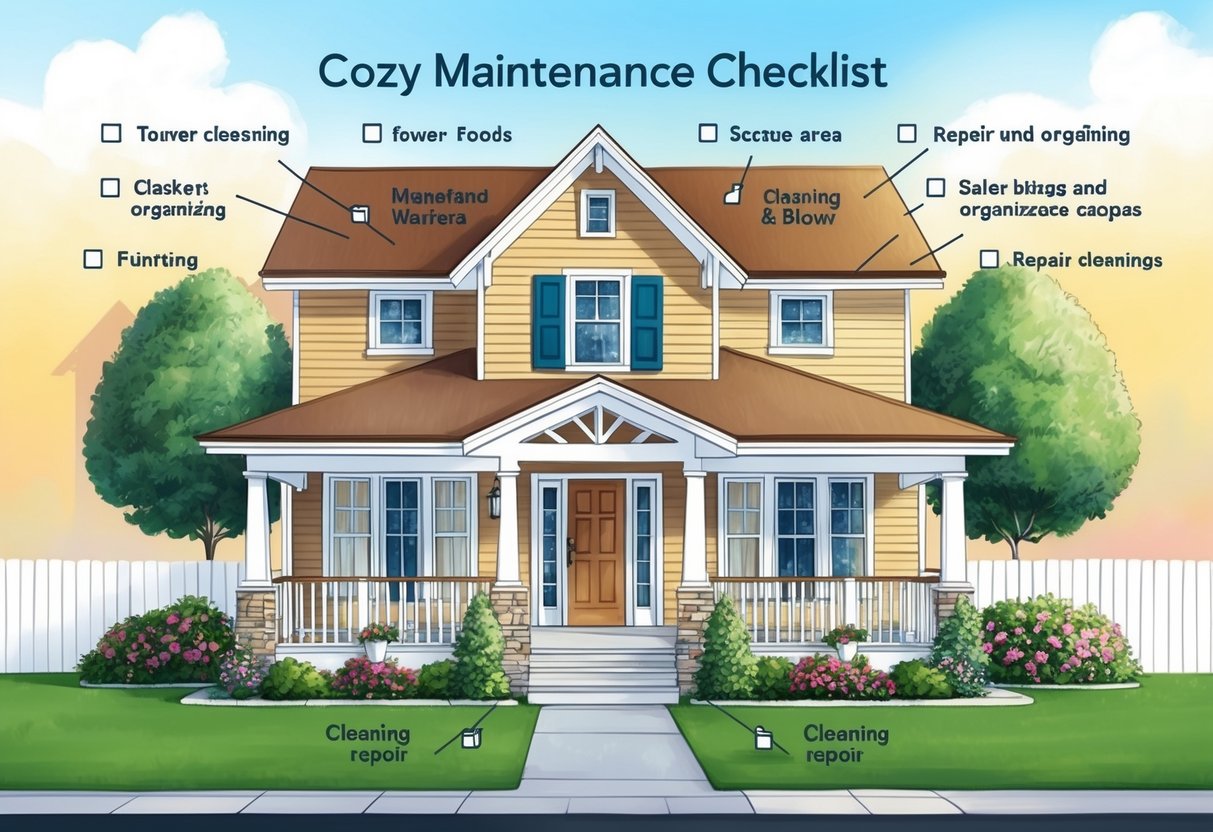
Essential Home Safety Maintenance

Routine safety maintenance is critical for protecting a home and its residents. Working detectors and properly maintained extinguishers lower risks from fire and carbon monoxide exposure.
Testing Detectors and Extinguishers
Smoke detectors and carbon monoxide detectors should be tested monthly using their built-in “test” button. Batteries require replacement at least once a year, though some newer models have sealed batteries lasting ten years.
Mark battery replacement dates and inspection schedules on a calendar to avoid missed checks. Place smoke detectors inside each bedroom, outside sleeping areas, and on every home level, including the basement.
Carbon monoxide detectors are best placed on each floor and near sleeping spaces. For better reliability, vacuum detectors regularly to prevent dust buildup, which can interfere with sensor operation.
Fire extinguishers should be located in key areas like the kitchen, garage, and utility rooms. Check the pressure gauge monthly to ensure the needle stays in the green zone.
Confirm the safety pin is intact and ensure there are no visible signs of damage or corrosion on the extinguisher body.
| Detector/Extinguisher | Test Frequency | Location |
|---|---|---|
| Smoke Detector | Monthly | Bedroom, hallway, each floor |
| CO Detector | Monthly | Near bedrooms, each floor |
| Fire Extinguisher | Monthly/Visual | Kitchen, garage, utility room |
How to Maintain Fire Safety Equipment
To ensure peak performance of fire safety equipment, keep a documented schedule for maintenance tasks. Dust and vacuum around smoke and CO detectors regularly, and replace units every 8–10 years as recommended by expert checklists.
Remember to shake dry chemical fire extinguishers quickly each month to prevent the powder from settling. Refill or replace extinguishers immediately if the pressure falls out of the operational range.
Keep instructions and emergency phone numbers easily accessible for every household member. For added protection, conduct a home fire drill twice a year.
Review fire extinguisher locations with everyone in the household to reinforce emergency preparedness and help ensure prompt, effective action during an emergency.
Frequently Asked Questions

Consistent home maintenance helps prevent costly repairs, preserves property value, and supports safety. Tasks can be divided among weekly, monthly, seasonal, and annual schedules to address every area of the home from exterior upkeep to system checks.
What are the essential tasks for monthly home maintenance?
Monthly tasks include replacing HVAC air filters, testing smoke and carbon monoxide detectors, and cleaning kitchen range hood filters. It’s also important to check water softener salt levels and ensure sinks, toilets, and bathtubs are draining properly.
Inspect the exterior for signs of pests or minor damage. Wipe down appliance surfaces, deep clean floors, and declutter living areas as part of standard monthly home maintenance.
Which annual tasks should be included in a comprehensive home maintenance plan?
Annual maintenance often covers servicing HVAC systems, flushing the water heater, and inspecting the roof and attic for leaks. Homeowners should also schedule gutter cleaning, chimney inspection, and have electrical systems checked by a professional.
Assess exterior paint or siding, check caulking around windows and doors, and review foundation for cracks.
What items should be on a seasonal home maintenance checklist for fall?
Fall is the prime time to clean gutters, downspouts, and inspect the roof for damage before winter. Homeowners should shut off and drain outdoor faucets and sprinkler systems, seal gaps in windows and doors, and have the furnace serviced.
Rake leaves, trim trees away from the house, and inspect weather stripping.
How can I create a weekly home maintenance schedule to keep my house in top condition?
A weekly schedule typically includes cleaning high-traffic areas, dusting, vacuuming carpets, and wiping down surfaces. It’s beneficial to check for water leaks under sinks and clear debris from entryways and walkways.
Many homeowners find it useful to use a checklist or digital reminder system.
What are general home maintenance services that every homeowner should consider?
Routine services such as pest control, HVAC servicing, chimney sweeping, and gutter cleaning support home safety and efficiency. Regular plumbing checks and electrical system inspections also help prevent emergencies.
Professionals can spot issues a homeowner might overlook. Many home maintenance checklists suggest these services at least once per year or as needed.
Can you list the routine maintenance tasks required to ensure a house runs efficiently?
Routine tasks to keep a home running smoothly include inspecting and changing air filters. Check thermostat settings, clear dryer vents, and test all safety alarms.
Lubricate door hinges and tighten loose hardware. Keep windows and doors clean and functional.
Regularly inspect the foundation and exterior for cracks or water leaks. Clean kitchen and bathroom fans.
Monitor attic and basement humidity. Schedule professional appliance maintenance annually if recommended.